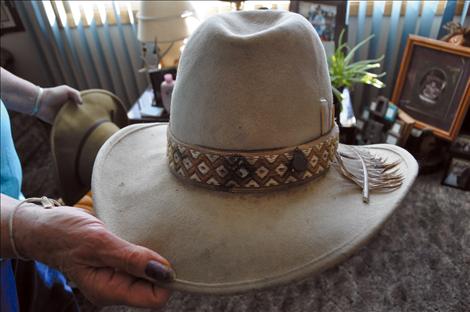Diocese of Helena files for bankruptcy, settles with Ursuline Academy victims
Hey savvy news reader! Thanks for choosing local.
You are now reading
1 of 3 free articles.
ST. IGNATIUS – A Jan. 31 settlement agreement with the Diocese of Helena sets aside millions for victims and marks the penultimate chapter in the fallout of more than three decades of horrendous systemic sexual abuse that occurred at numerous Catholic establishments in the western United States, including the now defunct Ursuline Academy in St. Ignatius.
The settlement guarantees the diocese will earmark $15 million in bankruptcy proceedings to be split between 362 victims who filed suit against the diocese, the Jesuit Order, and the Ursuline Sisters of the Western Province in 2011. The Jesuits settled that same year. Trial for the case against the Ursuline Sisters, who staffed and administrated the St. Ignatius boarding school, is set for this July.
The diocese’s decision to settle came one week before the case was set to go to trial. Although the agreement to settle has faced criticism because it means some details that would have been publicized during the trial could remain hidden, the diocese will have to provide more than compensation.
Names of credibly accused abusers will have to be published, according to Vito de la Cruz, an attorney who worked on the case for the Tamaki law firm based in Yakima, Wash.
“That’s an integral part of the settlement,” de la Cruz said. “It’s part of the diocese accepting responsibility.”
The list of abusers will be helpful for people who may come forward in the future with a claim, de la Cruz said. The church is expected to provide an additional couple million dollars that will be available for future claimants.
Printing names will also benefit the victims, who have struggled for decades with the aftermath of the abuse.
“They are in their 50s or 60s now,” de la Cruz said. “The posting of the names of the perpetrators are part of the healing process of those people.”
The diocese also must set up procedures and practices to prevent future abuse and make resources available for victims of past abuse.
“They will no longer hide behind a veil of secrecy and keep complaints and allegations of child sexual abuse hidden from public eye,” de la Cruz said.
The diocese also must formally apologize, which Helena Bishop George Leo Thomas did in a press release on Jan. 31 and again in a letter to parishioners on Feb. 2.
“The vast majority of these claims are between 30 and 60 years old,” Bishop Thomas wrote. “However, in my personal meetings with victims, it is evident that the scarring and pain continues to affect many of them every day. The impact on their lives cannot be underestimated.
“To anyone who was abused by a priest, a sister, or a lay Church worker, on behalf of the entire Diocese of Helena, I express my profound sorrow and sincere apologies. No child should experience harm from anyone who serves in the Church.”
Bishop Thomas also said perpetrators of the crimes were no longer affiliated with the church.
“I want to assure you that none of those who have been credibly accused remain active in ministry at this time,” Bishop Thomas said in the release. “In fact, the majority of those accused have died.”
Any living abusers face little chance of prosecution. The state statute of limitations for felony sex offenses against a child expires 10 years after the victim reaches age 18. The statute of limitations for misdemeanor crimes of the same nature is five years after the victim reaches adulthood.
Bankruptcy issues
The bishop went on to say that the church’s financial problems date back further than the lawsuit. It is unclear exactly how the bankruptcy
will affect the nonprofit Foundation for the Diocese of Helena, an affiliated organization that reported more than $21 million in assets last year. The group supports parish ministries, youth outreach, mission trips, scholarships and other outreach efforts in conjunction with the diocese. The St. Ignatius Mission Parish received $400 of more than $40,000 awarded in the current fiscal year for adult outreach services. The foundation’s assets include an endowment funded in 2008 that provides building maintenance for the St. Ignatius Mission Parish.
“It’s too early to tell what impact the bankruptcy filing will have on the Foundation,” Executive Director Jeanne Saarien wrote in an email to the Valley Journal. “The Foundation is a separate legal entity, so we don’t expect any direct impact on the Foundation, although we are a creditor of the Diocese and may be impacted along with other creditors once the Chapter 11 plan becomes known.”
The foundation listed more than $760,000 in loans receivable and $48,000 in interest receivable on its most recent financial forms, but did not specify how much of that was made to the diocese.
In his letter to parishioners Bishop Thomas said the church has cut back its staff, services, and parish building projects because of the financial issues.
The agreement to settle likely ended up costing the church less than prolonged litigation, the Bishop Thomas wrote. It also spared victims the process of having to relive the horrors they endured on the witness stand.
Bishop Thomas gave a hopeful outlook for the future of the diocese, which oversees the western half of the state.
“These are challenging days for all of us,” Bishop Thomas wrote. “At the same time, they are hope-filled days. As your Bishop I am convinced that we will move into the future as an increasingly robust Church, relying on God’s grace and the guidance of the Holy Spirit.”
Too little, too late
Janice Couture’s living room and kitchen overflow with mementos of Leland “Jimi” Hewankorn. His old beaten-up fishing hat sits on a lampshade next to another, fancier cowboy hat the man had custom made.
“He always had on a hat,” Couture said in an interview last week as she pointed to one of hundreds of pictures of the man that are tucked away in an album. Only two photos show Hewankorn without some type of head-topper. Christmas was a special occasion where Hewankorn donned a Santa cap on top of his cowboy hat, with an ever-present impish grin that carries throughout the tome of photos.
Nearby, Hewankorn’s 9-month-old granddaughter Kwe’lulexw’, whom he affectionately nicknamed Peanut, bounces in a walker. Her eyes light up when she sees photos of her grandfather, and Couture said the baby sometimes gives up a chorus of “pa, pa, pa, pa” at his image.
Hewankorn died on Dec. 30, 2013 at the age of 61. His obituary tells a lively account of the man’s life. It references his past as a Golden Glove Boxing champion for Northwestern Montana, his affinity for playing stickgame and performing country western music, and love of the outdoors.
For Couture, who lived with Hewankorn the last six years of his life, there are the memories that read between the lines.
“He would give you the shirt off his back,” Couture said, as she remembered him stopping to give a coat to a woman left shivering at a bus stop in the cold. The woman couldn’t speak, but passed Hewankorn notes to tell him her story. In exchange for the coat Hewankorn received a box of macaroni from the woman. In another instance, Hewankorn drove all the way from Ronan to Missoula to deliver a pair of hitchhikers to their destination.
“He said it was too cold for them to be outside walking,” Couture recalled.
The love of his children, grandchildren, and sister are other defining characteristics Couture uses to describe Hewankorn. The lasting impact of the time Hewankorn was enrolled in the Ursuline Academy is not.
“He went through hell,” Couture said.
Hewankorn was one of many Native American children forced to attend boarding schools per U.S. policy meant to bring about assimilation and squelch native heritage and language. But in the halls of the Ursuline Academy, pupils were stripped of their innocence in addition to their native identities. Court documents tell heinous stories of nuns, priests, and other church staff who routinely raped, assaulted, and beat the students for decades between 1940 and 1970.
When the first settlement monies from the Jesuits came in 2011, Hewankorn used very little for himself.
“To him that money was evil,” Couture said. “… He didn’t even really spend it. He bought his daughter a house.”
The one thing Hewankorn never got to hear came 32 days after his death: an apology.
“He never got an apology,” Couture lamented. “ (The settlement money) didn’t pay for nothing they went through.”
In Hewankorn’s last days, he gave Couture clear instructions on how he wanted to be remembered. He focused on the bright parts of his later days, instead of the early darkness.
“He said to tell them ‘I had a good life,’” Couture said.

















